Common Questions About Agriculture
Accurate, well-sourced information
Helpful information is just a click away! We've made it easy to access accurate and well researched answers to some of the most common questions about agriculture.
No. There is no nutritional difference in the two colors of eggs. Both are good for you and part of a balanced diet. Different breeds of chickens lay different colored eggs. White Leghorns and Golden Comets are common breeds of egg-laying chickens. The White Leghorns lay white eggs, while the Golden Comets lay brown. Often, the color of the egg is the same as the color of the skin around the chicken’s ears. Depending on where you live, you might see more brown or white eggs. There are more brown eggs in the northeastern U.S., and more white eggs in the western U.S.
Not necessarily. Research shows that frozen vegetables can even be more nutritious than fresh vegetables! There are two reasons why. First, frozen vegetables are often left to ripen longer than fresh vegetables. As they ripen and mature, they become full of vitamins, minerals and antioxidants. Second, vegetables begin to lose their nutritional value as soon as they are harvested. Freezing slows this process. Scientists conducted a test on frozen and fresh vegetables. They found that vitamin C in fresh broccoli dropped by more than 50% within one week, but in frozen broccoli it dropped by only 10%. Those only eating fresh, raw vegetables may be missing out on the full nutritional benefit of eating vegetables from a variety of sources.
America’s farms are still family farms. Family farms do incorporate for the same reasons that other businesses incorporate — taxes, structure, family home protection, etc. And yes, some family farms are becoming larger to take advantage of efficiencies of scale and to spread out their overhead costs. However, they are still considered family farms. Today, about 98% of U.S. farms are operated by families — whether individuals, family corporations or family partnerships.
Yes. Food in the United States is very affordable. We only spend an average of 10% of our household income on food compared to 30% in India and 53% in Kenya. According to the USDA Center for Nutrition Policy, a family of four on a thrifty meal plan can eat at home for about $130 a week. American farmers work hard to provide consumers safe, healthy and wholesome food at these affordable prices. Additionally, consumers can follow tips from www.choosemyplate.gov about healthy eating on a budget. These include creating a game plan before grocery shopping, learning to correctly read food labels and researching budget-conscious meals.
Unfortunately, the answer is not as simple as a mere calculation. The United States uses more than one-third of its land for pasture. For more than 100 million people in arid regions, grazing livestock is their only source of livelihood. Half of the land area in the U.S. cannot be used for growing crops and is used as grazing land instead. If cattle, sheep and goats were not grazed on this land, it would be of no use for food production.
Not necessarily. This may come as a surprise, but if you’re buying or eating locally grown food, it may not be food grown in your community. There is no set determination for the definition of locally grown. Locally grown products may have been grown at a local farm just up the road, in the same county as your farmers market or, possibly, even within the same state. However, in other cases, locally grown may come from 250, 400 or even 1000 miles away from the spot of sale. The Food, Conservation and Energy Act of 2008 defines locally grown as “being transported less than 400 miles, or from within the state in which it is produced.” But retailers, states, farmer’s markets and other organizations may use their own definition. Want to know where your food comes from? Read the label or ask your local grocer.
Some cuts of beef can be as lean as a 3-oz. skinless chicken thigh. A 3-oz. serving of beef provides 10 essential nutrients including vitamins B6 and B12 and about half the daily requirement of protein. The National Institute of Health states that B6 is related to metabolism and immune function as well as brain development during pregnancy. B12 helps blood cell and DNA development. Interestingly, no plants have naturally occurring B12.
No. Local is a definition based on location. The Congressional Research Service defined locally grown as “being transported less than 400 miles, or from within the state in which it is produced,” but retailers, states, farmer’s markets and others can come up with their own definition. Organic is a definition based on production method. According to the United States Department of Agriculture, organic farms follow a set of standards outlined in the Organic Foods Production Act. Products are held to these standards all the way from farm-to-table and are subject to regular on-site inspections. Want to find out more about the National Organic Program? Visit www.ams.usda.gov/AMSv1.0/nop
Ultimately, environmental sustainability comes down to the farmer, whether they produce goods organically or conventionally. Good farmers manage erosion, water use, control runoff and work to replenish the nutrients of the soil. There are many factors that affect environmental impact. Let’s look at land use and transportation. An article published in the journal Nature by researchers from Canada’s McGill University and the University of Minnesota found that, on the whole, organic production produces 25% less food on the same land as conventional production. This is an average, however, and some organically produced crops are comparable in productivity to conventionally produced crops. Transporting products also impacts the environment. All goods must be transported from the farm to a retailer, and often many stops in between. An organic or conventional farmer across the country may have a very sustainable farm but transporting their goods to you can have an impact on the environment
Not necessarily. In many cases, hunger is not caused by a shortage of food. In fact, the world produces enough food to feed everyone. In most cases, hunger is caused by poverty. Poverty results in the inability to purchase food, safely store food or transport food from where it is grown to where it is needed.
High fructose corn syrup (HFCS) is a common sweetener in sodas and drinks. Recently, it has come under fire for impacting obesity, but research suggests that there is no significant difference between HFCS and other sweeteners. Researchers are confident, however, that too much sugar of any kind in a diet can lead to obesity. The American Heart Association recommends no more than 100 calories a day of added sugar for women and 150 calories for men. That’s equal to about 6 tsp of sugar for women, and 9 tsp for men.
Natural and organic are not interchangeable terms. According to the Food Marketing Institute, “the term natural applies broadly to foods that are minimally processed and free of synthetic preservatives.” According to the USDA, “Organic is a labeling term that indicates that the food or other agricultural product has been produced through approved methods that integrate cultural, biological and mechanical practices that foster cycling of resources, promote biological balance and conserve biodiversity.” Organic processors go through a strict regulated certification process that involves reporting on how products are produced, processed and distributed. While the term “natural” is only vaguely defined, usually by the company producing the product, the term “organic” is clearly defined and subject to stringent federal regulations regarding its use.









